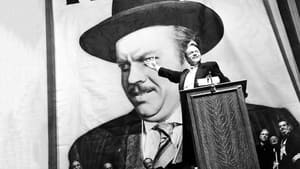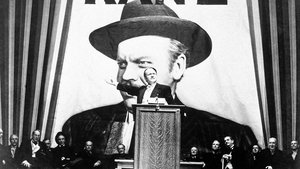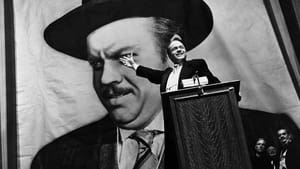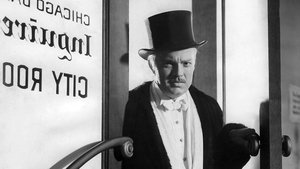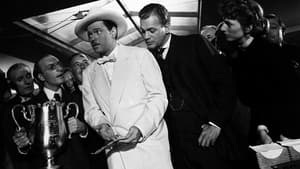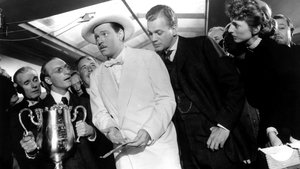Contact: [email protected]
Video Sources 0 Views
- Watch trailer
- Citizen Kane

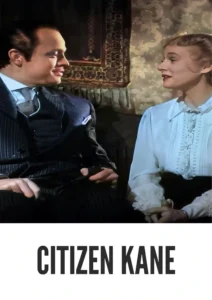
Synopsis
Table of Contents
ToggleReview: Citizen Kane (1941) – A Cinematic Masterpiece Ahead of Its Time

Introduction
Citizen Kane, released in 1941, stands as a landmark achievement in cinema, directed by and starring Orson Welles. Renowned for its innovative storytelling, groundbreaking cinematography, and complex characters, this classic film continues to influence filmmakers and captivate audiences with its timeless exploration of power, ambition, and the human condition. In this review, we’ll delve into the groundbreaking brilliance of Citizen Kane and its enduring legacy in the world of cinema.
Check The Full Colorized Movies List
Check Our Colorized Movies Trailer Channel
Understanding Citizen Kane (1941): Director, Cast, and Genre
Directed by Orson Welles, Citizen Kane features a stellar cast led by Welles himself, along with Joseph Cotten, Dorothy Comingore, and Agnes Moorehead. The film defies easy categorization but is often considered a drama, mystery, or even a psychological thriller due to its multifaceted narrative and thematic depth.
Exploring the World of Citizen Kane (1941): Plot and Characters
Citizen Kane follows the life and legacy of Charles Foster Kane, a wealthy and enigmatic newspaper tycoon whose rise to power is marked by ambition, idealism, and ultimately, tragedy. Through a series of flashbacks and interviews with those who knew him, the film pieces together the puzzle of Kane’s life, exploring the complexities of his character and the forces that shaped his destiny.
The Art of Film Colorization
While Citizen Kane was originally filmed in black and white, its early colorized version adds a new layer of depth to its visually stunning cinematography. The colorization process enhances the film’s visual richness and captures the nuances of its iconic imagery with breathtaking clarity.
Early Colored Films: A Brief History
The history of early colored films is marked by experimentation and innovation as filmmakers sought to enhance the visual appeal of their movies. From hand-tinted frames to pioneering technicolor processes, the evolution of colorization techniques transformed the cinematic landscape, offering audiences a new way to experience the magic of the silver screen.
Citizen Kane (1941) and Its Early Colored Version
The decision to release Citizen Kane in a colorized format was made with the intention of immersing audiences in the visual splendor of its iconic imagery and enhancing the film’s emotional impact. While some purists may prefer the original black and white version, the early colorized edition of Citizen Kane adds a new layer of depth to its cinematic beauty and captures the grandeur of its epic storytelling with stunning clarity.
The Debate Over Film Colorization
The debate over film colorization has raged for decades, with proponents arguing that it breathes new life into classic films and makes them more accessible to modern audiences, while detractors maintain that it compromises the artistic integrity of the original work. As technology advances and filmmaking techniques evolve, the debate over colorization remains a contentious issue within the film community.
Examining Citizen Kane (1941) as an Early Colored Film
Viewing Citizen Kane in its early colorized iteration offers audiences a fresh perspective on its visual brilliance and thematic depth. The colorization process enhances the film’s iconic imagery and captures the emotional nuances of its characters with breathtaking clarity. As viewers are drawn into the complex world of Charles Foster Kane, they are treated to a visual feast that immerses them in the timeless beauty of one of cinema’s greatest masterpieces.
Influence and Legacy: Citizen Kane (1941)’s Impact on Cinema
Citizen Kane is widely regarded as one of the greatest films ever made, with its innovative storytelling, groundbreaking cinematography, and complex characters influencing generations of filmmakers. Its exploration of power, ambition, and the human condition continues to resonate with audiences around the world, making it a timeless classic that remains as relevant today as it was upon its release.
Director’s Cinematic Legacy: Beyond Citizen Kane (1941)
Orson Welles’s directorial legacy extends far beyond Citizen Kane, encompassing a diverse body of work that includes acclaimed films such as The Magnificent Ambersons and Touch of Evil. As one of the most innovative filmmakers of his generation, Welles was known for his visionary storytelling and bold experimentation, pushing the boundaries of cinema and leaving an indelible mark on the medium.
Themes Explored in Citizen Kane (1941)
At its core, Citizen Kane explores themes of power, ambition, and the pursuit of the American Dream, offering a searing critique of wealth, privilege, and the corrupting influence of unchecked ambition. Through its complex characters and multifaceted narrative, the film challenges viewers to confront their own beliefs about success, happiness, and the true meaning of life.
Reception and Controversy Surrounding Citizen Kane (1941)
Upon its release, Citizen Kane received widespread critical acclaim for its innovative storytelling, groundbreaking cinematography, and powerhouse performances. While the decision to release the film in a colorized format sparked debate among purists, its enduring popularity has cemented its status as a timeless classic of cinema.
Where to Watch Citizen Kane (1941) Online
For those eager to experience Citizen Kane for themselves, the film is readily available on popular streaming platforms such as Amazon Prime Video, Google Play Movies, and iTunes. Whether viewed in its original black and white format or its early colorized iteration, Citizen Kane offers a cinematic experience that is both visually stunning and thematically rich.
FAQs About Citizen Kane (1941)
1. Is Citizen Kane based on a true story?
No, Citizen Kane is a fictional film that draws inspiration from the lives of real-life media moguls such as William Randolph Hearst and Joseph Pulitzer. While the film’s storyline may contain elements of truth, its characters and plot are works of fiction.
2. Who starred in Citizen Kane?
Citizen Kane stars Orson Welles in the role of Charles Foster Kane, a wealthy and enigmatic newspaper tycoon. He is supported by a talented ensemble cast, including Joseph Cotten, Dorothy Comingore, and Agnes Moorehead.
3. What is the central message of Citizen Kane?
At its core, Citizen Kane explores the corrupting influence of power and the emptiness of material wealth, offering a searing critique of the American Dream. Through its complex characters and innovative storytelling, the film challenges viewers to confront their own beliefs about success, happiness, and the true meaning of life.
4. Why was Citizen Kane released in a colorized format?
The decision to release Citizen Kane in a colorized format was made with the intention of immersing audiences in the visual splendor of its iconic imagery and enhancing the film’s emotional impact. While some purists may prefer the original black and white version, the early colorized edition of Citizen Kane adds a new layer of depth to its cinematic beauty and captures the grandeur of its epic storytelling with stunning clarity.
5. What is the legacy of Citizen Kane?
Citizen Kane is widely regarded as one of the greatest films ever made, with its innovative storytelling, groundbreaking cinematography, and complex characters influencing generations of filmmakers. Its exploration of power, ambition, and the human condition continues to resonate with audiences around the world, making it a timeless classic that remains as relevant today as it was upon its release.
6. Are there any sequels or remakes of Citizen Kane?
No, there have been no official sequels or remakes of Citizen Kane. However, the film’s enduring popularity has inspired countless reinterpretations and homages in various media. Nonetheless, none have captured the groundbreaking brilliance and thematic depth of the original 1941 classic.
7. Where can I watch Citizen Kane online?
For those eager to experience Citizen Kane for themselves, the film is readily available on popular streaming platforms such as Amazon Prime Video, Google Play Movies, and iTunes. Whether viewed in its original black and white format or its early colorized iteration, Citizen Kane offers a cinematic experience that is both visually stunning and thematically rich.
Conclusion
In conclusion, Citizen Kane (1941) stands as a cinematic masterpiece ahead of its time, with its innovative storytelling, groundbreaking cinematography, and complex characters setting a new standard for the medium of film. Whether viewed in its original black and white format or its early colorized iteration, Orson Welles’s visionary direction and the stellar performances of the cast offer a cinematic experience that is both visually stunning and thematically rich. As viewers are drawn into the enigmatic world of Charles Foster Kane, they are treated to a journey that challenges their beliefs about power, ambition, and the true meaning of life. Citizen Kane remains a timeless classic that continues to enthrall and inspire audiences around the world.
